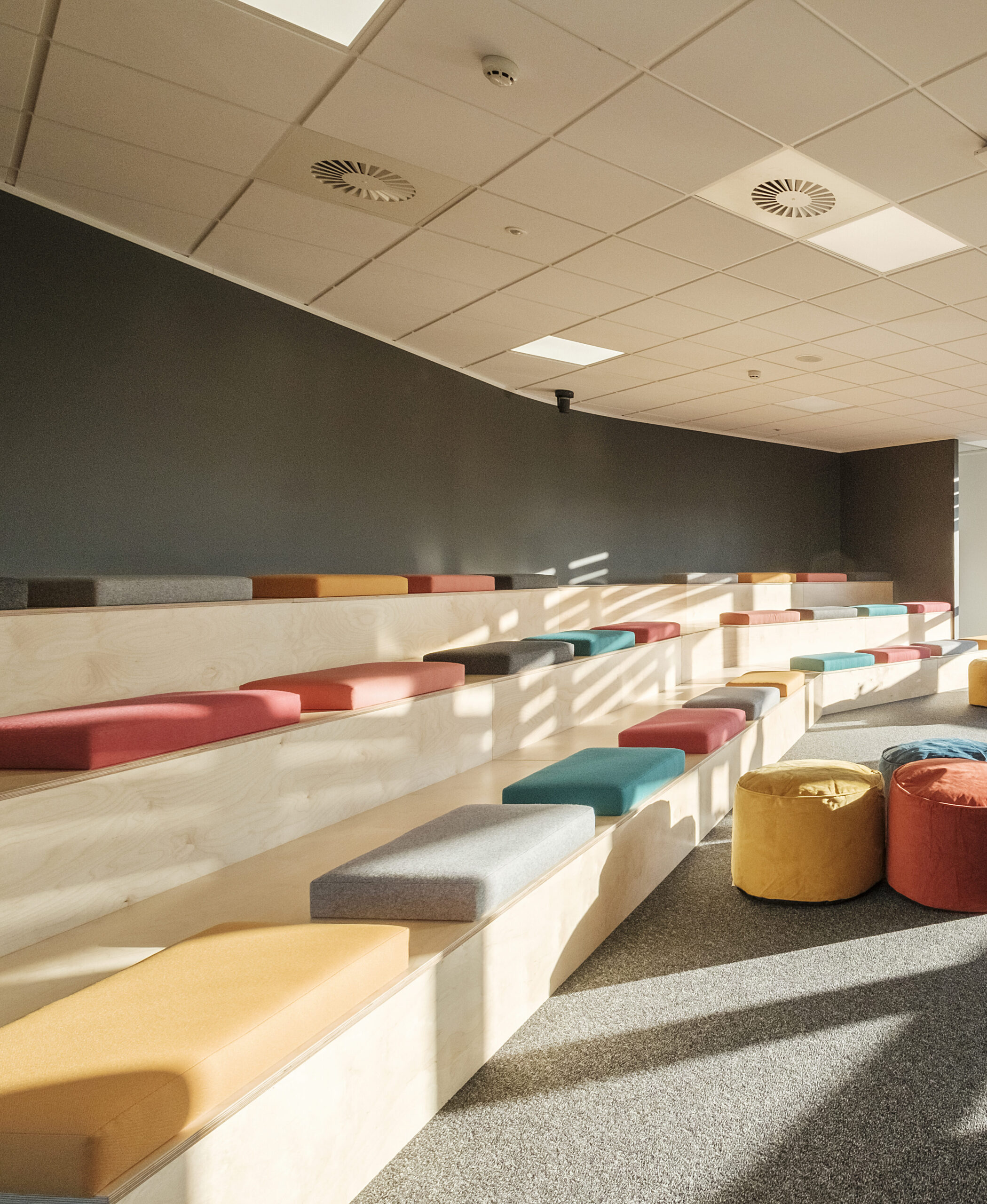
Industry Insight
The Emotion of Space: Building Brand Identity Through Design

For many, the first thought that comes to mind when discussing workspaces within the food industry involves busy kitchens, production lines, or restaurant spaces.
However, modern spaces within the food industry have undergone a fascinating transformation, reflecting not only broader workplace trends but also the unique needs of a fast-moving sector.
In the mid-to-late 20th century, offices in the food sector were often purely functional – designed for purpose with no frills. More often than not, they were closely situated to manufacturing plants, distribution hubs, or retail headquarters; these offices were designed with efficiency in mind. The focus was on admin, processing orders and managing stock, rather than on promoting collaboration or encouraging creativity.
Desks were arranged in rows, filing cabinets dominated the floor, and there was little thought given to aesthetics or employee wellbeing. Food companies were growing rapidly, and the office was simply a tool to support operations.
Heading into the 1990s, many food brands had started to become household names and set up shop in bigger cities. To use Leeds as an example, Asda, Morrisons and Arla Foods in made Yorkshire their home with expansive city centre offices here. This led to offices being redesigned to reflect a more corporate identity. Larger headquarters popped up, often in city centres or business parks, with an interior design that not only showcased professionalism but was also an expression of the brand.
Boardrooms, cubicles, and branded reception areas became the norm, in fact, essential to proving you were moving with the times. For food companies expanding internationally, offices also became a hub for marketing, finance, and strategic decision-making, not just supply chain management.
The need for better facilities to market the brand also came into play, such as photography studios to support in-house marketing teams with product photography.
This was the dawn of the era where image began to really matter…
The turn of the century brought with it a significant shift in workplace design across industries, and the food sector was no exception. Open-plan layouts started to replace cubicles, driven by a desire for collaboration and flexibility. For food companies, this was particularly relevant as the workplace needed to reflect a common theme amongst food brands’ messaging: family and togetherness.
Practice what you preach. If your brand is selling a product which brings people together around the table, you should create a workspace which does the same.
Food is an industry that thrives on ideas, new recipes, packaging designs, and consumer campaigns, and so, offices began to include breakout areas, brainstorming rooms, and shared kitchens where teams could experiment and collaborate.
Having an office which incorporated a communal area for tasting sessions alongside a fully-equipped kitchen for chefs to create samples of new products became invaluable. New product development is something that’s extremely important to these brands, and not only is being able to host these taster sessions useful for product and marketing teams, it’s also a great way to get people together and encourage natural collaboration.

Over the past decade, offices in the food industry have naturally evolved to focus more on employees as the realisation that healthier, more inspiring work environments have an overwhelmingly positive effect on productivity.
For food companies, there’s also a huge importance placed on sustainability and associating your brand with eco-friendly practices on a day-to-day basis. This is often implemented through sustainable design features such as energy-efficient lighting, recycled materials, biophilia and smart systems.
Flexible working has also reshaped the office landscape. Many food companies now combine physical spaces with remote working, creating offices that act as collaboration hubs rather than daily workplaces.
Today, offices within the food industry do more than house employees; they act as physical extensions of the brand. A visitor to a coffee company’s HQ might find café-style meeting areas; a health-food brand might have bright, plant-filled offices that mirror its ethos of natural living. For staff, this helps reinforce company culture; for clients and partners, it creates an immediate sense of what the business stands for.
Similarly, as a real-world example, we can use McCain, who needed a space which reflected their strong focus on family and authenticity. These are values that we worked heavily into the design, from full-wall spreads to individual coat hooks; every detail reinforced the brand.
So, about McCain…
We cite one of the reasons our partnership has been so long and fruitful, being our understanding of modern workplaces within the food industry. McCain needed a partner that was able to support their ambition with spaces that propelled brands rather than held them back.
Having worked together on projects both in the UK and in the US, we’ve created some really exceptional spaces for McCain that not only are we incredibly proud of, but are also perfect for them. Together, we’ve been frying high… (sorry)

As technology, sustainability, and hybrid working continue to shape the future, it’s inevitable that office uses for food-oriented businesses will need to evolve with the times. Digital collaboration tools will reduce the need for fixed desks, while offices will increasingly focus on shared experiences, innovation spaces, and reflect the unique story of the brand.
Ultimately, the office is no longer just a workplace – it’s a showcase of culture, creativity, and commitment to people. And in the food industry, where passion and innovation are everything, that evolution feels particularly fitting.
See how we’ve supported this with McCain >
All images used are from McCain’s Chicago HQ, photographed by Marian Kraus.